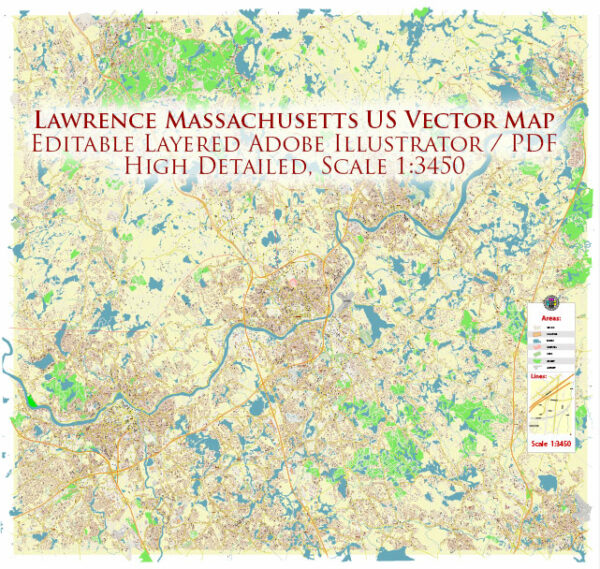Lawrence, Massachusetts, has a rich history of urban development that is closely tied to its industrial past. Here is an overview of the city’s urban development history:
- Founding and Industrialization (1845-1900):
- Lawrence was founded in 1845 and quickly became an industrial center during the 19th century.
- The city was planned and developed by the Essex Company, which aimed to create a planned industrial community.
- Textile mills, powered by the Merrimack River, played a crucial role in Lawrence’s economy during this period.
- The city attracted a diverse immigrant population, including Irish, German, and, later, Eastern European and Southern European immigrants, who came to work in the mills.
- Labor Movement and Strikes (19th-20th Century):
- Lawrence gained national attention during the Bread and Roses Strike of 1912, a pivotal event in the American labor movement.
- Workers, including many immigrant women, protested poor working conditions and demanded better wages and shorter working hours.
- The strike had a lasting impact on labor laws and improved working conditions in Lawrence and beyond.
- Post-World War II Changes (1945-1970):
- After World War II, Lawrence experienced economic changes as manufacturing declined in the United States.
- Deindustrialization led to the closure of many mills, impacting the city’s economy and employment rates.
- The city faced challenges related to economic decline, urban decay, and population loss.
- Urban Renewal and Redevelopment (1960s-1980s):
- Like many other American cities, Lawrence underwent urban renewal projects in the mid-20th century.
- These initiatives aimed to revitalize the city by tearing down older structures and building modern infrastructure.
- Some historic buildings were lost during this period, but efforts were made to preserve key landmarks.
- Economic Revitalization (Late 20th Century – Present):
- In recent decades, Lawrence has seen efforts to revitalize its economy and urban landscape.
- Redevelopment projects, including the preservation of historic buildings, have sought to balance the city’s industrial heritage with modern needs.
- Cultural initiatives, community development programs, and investments in education have contributed to the city’s ongoing transformation.
- Cultural Diversity and Heritage Preservation:
- Lawrence remains a culturally diverse city, reflecting the legacy of immigration that shaped its history.
- Efforts have been made to preserve and celebrate the cultural heritage of different ethnic communities within the city.
- Challenges and Opportunities:
- Lawrence continues to face challenges related to economic disparities, crime, and infrastructure.
- Community organizations, local government, and residents are actively involved in addressing these issues and promoting positive change.
Lawrence’s history of urban development reflects the broader trends in American industrialization, deindustrialization, and the ongoing efforts to balance preservation of heritage with the need for modernization and revitalization.


 Author: Kirill Shrayber, Ph.D.
Author: Kirill Shrayber, Ph.D.